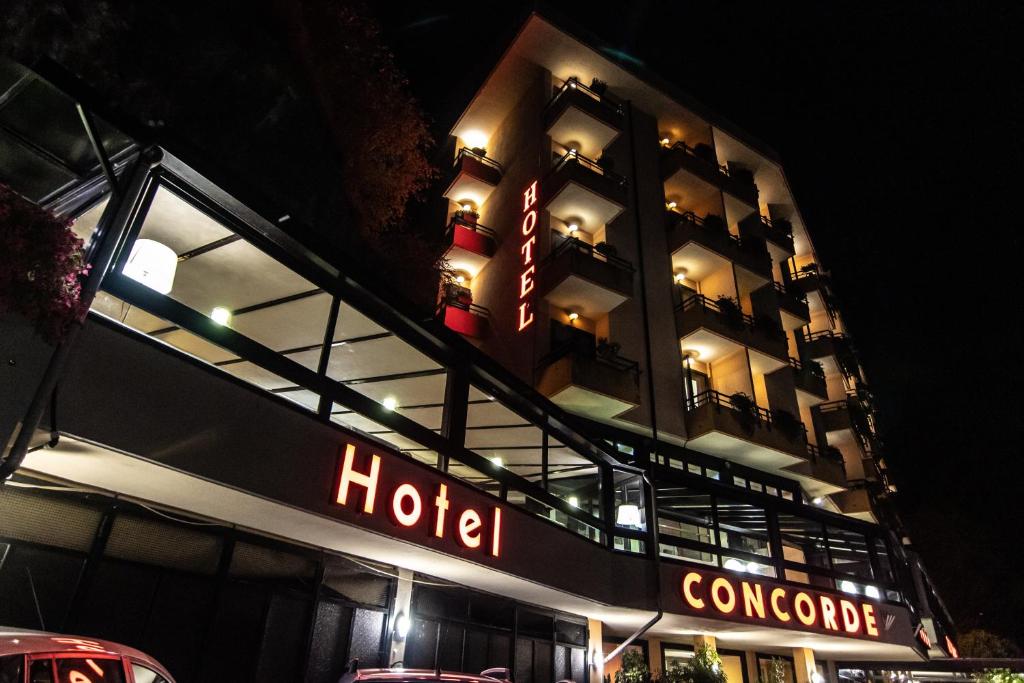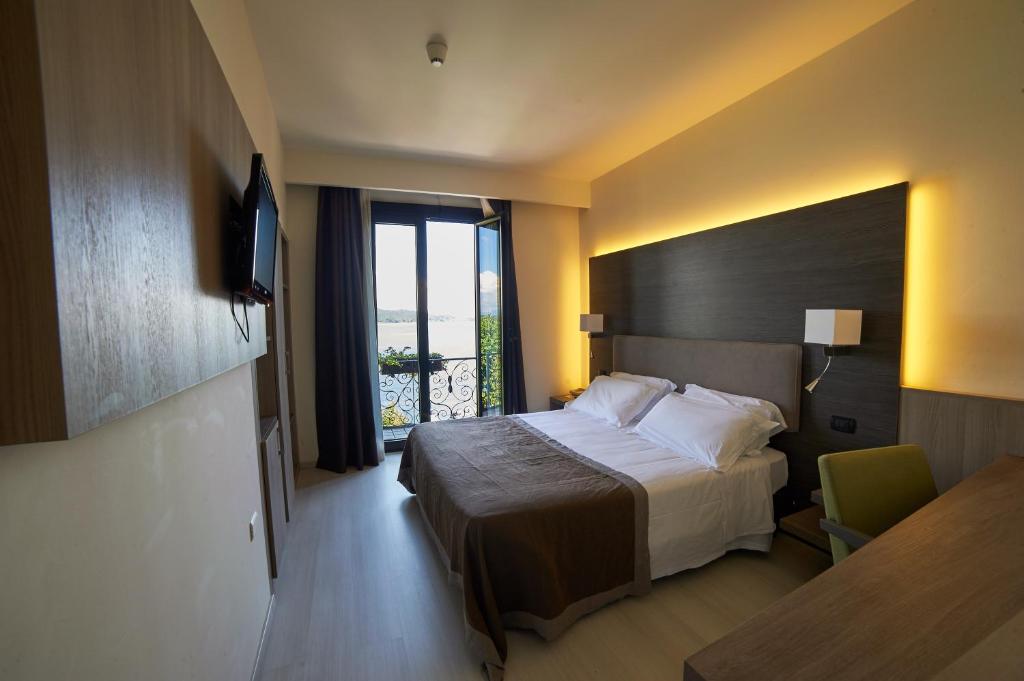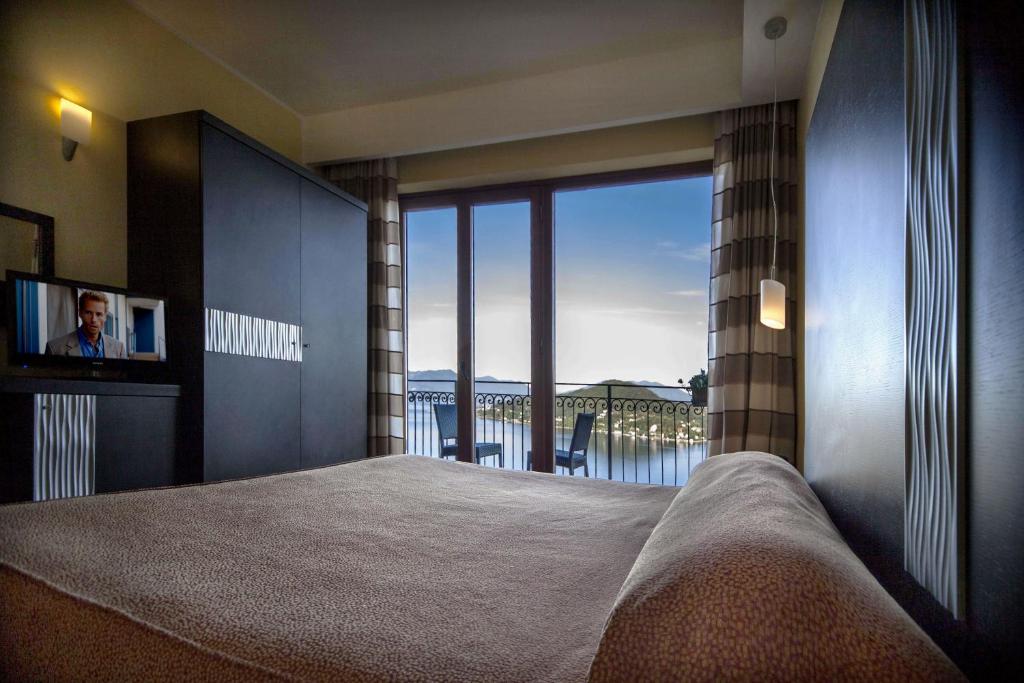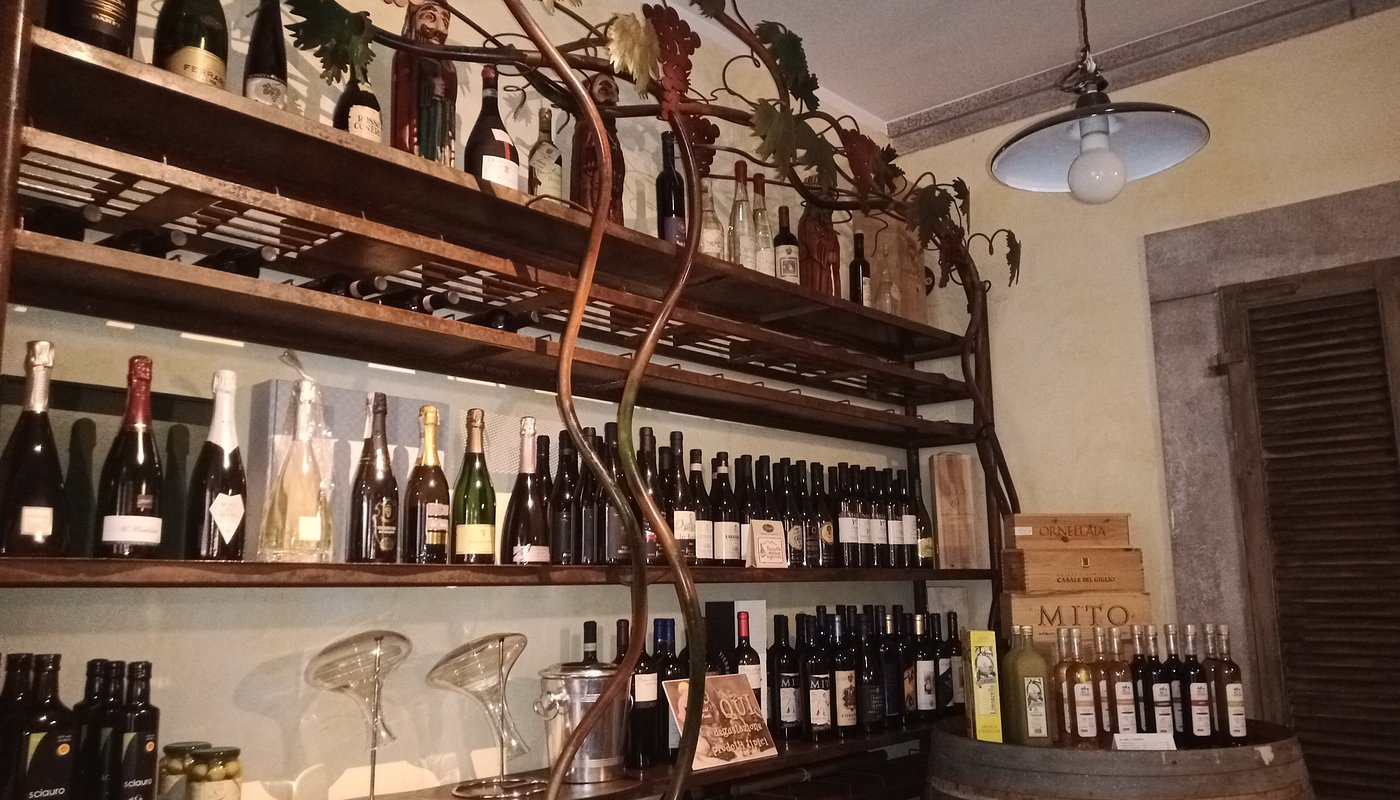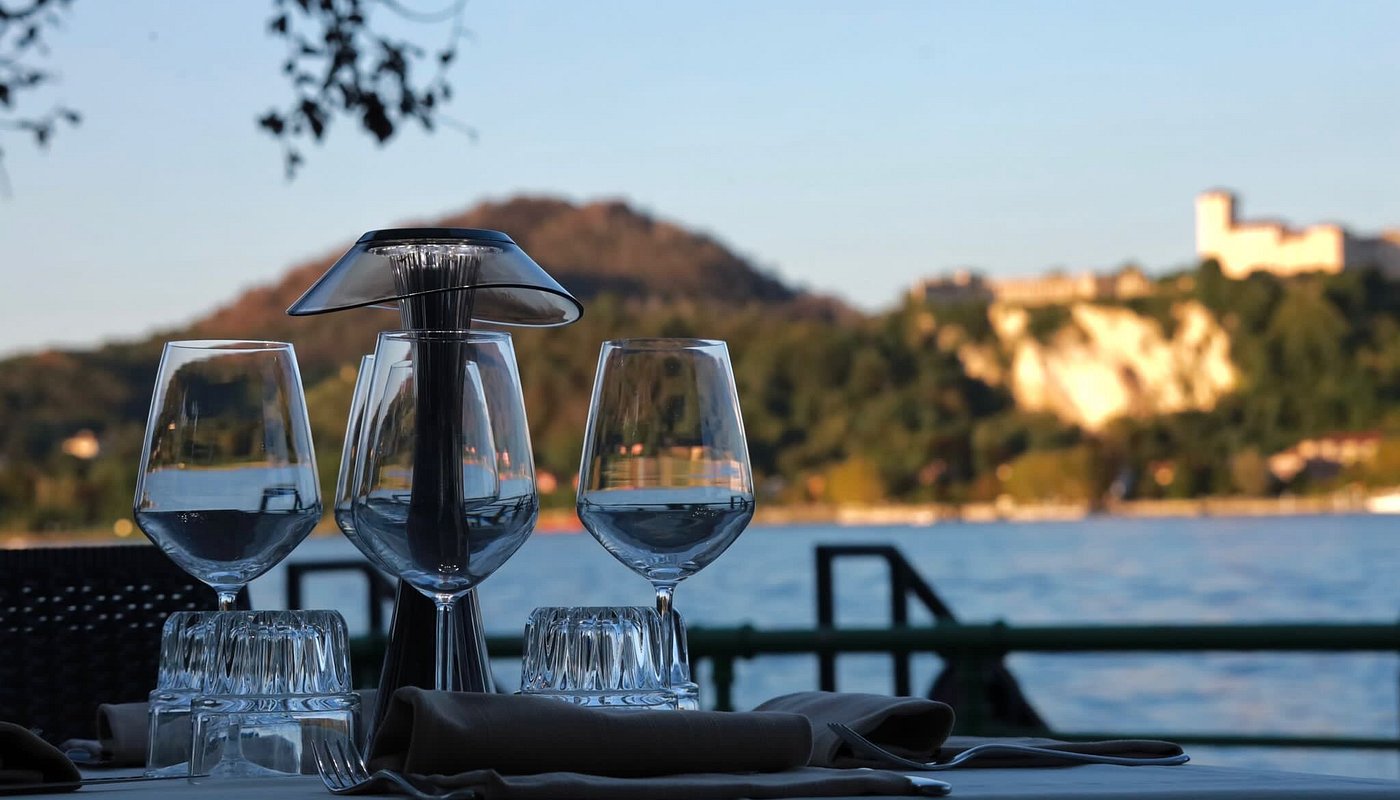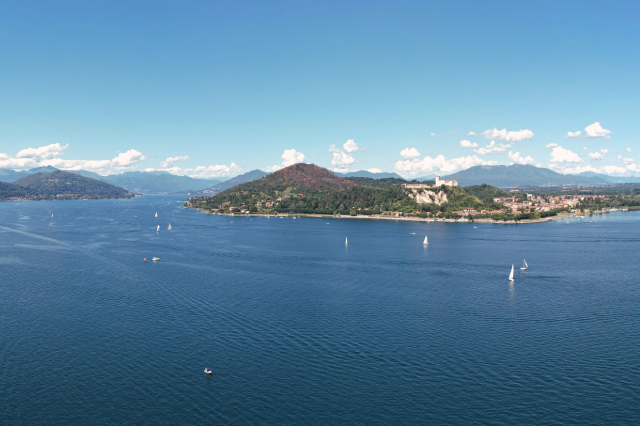
Arona
Located on the Piedmontese shore of Lake Maggiore, Arona is a town of great historical and scenic interest. With its lively lakefront, rich artistic heritage, and one-of-a-kind panoramic viewpoint at the Colossus of San Carlo Borromeo, Arona offers a variety of experiences.
The city has ancient origins and has played an important role throughout history, particularly in controlling trade routes on the lake. Today, it is a destination that combines culture, nature, and outdoor activities.
Summary
What to See in Arona
Colossus of San Carlo Borromeo
This enormous statue, standing 35 meters tall, is dedicated to San Carlo Borromeo, the Archbishop of Milan, who was born in Arona in 1538. Built between 1614 and 1698, it is made of copper and bronze and is one of the tallest visitable statues in the world.
The hollow interior allows visitors to climb up through a narrow staircase to the statue’s head, where they can enjoy a panoramic view of Lake Maggiore and the surrounding mountains—through the statue’s eyes!
Arona’s Lakefront Promenade
The lakefront promenade is one of the busiest and most scenic spots in town. The wide, tree-lined avenue stretches for over a kilometer along the shore, dotted with well-kept gardens, cafés, restaurants, and spaces to relax and enjoy the view.
During the summer months, the lakefront becomes a lively gathering place, perfect for outdoor dining on terraces overlooking the water.
Historic Center
Arona has preserved its medieval layout, particularly in its main streets. The town’s heart is Piazza del Popolo, home to historic landmarks such as:
- Palazzo di Giustizia, a 15th-century arcade building with elegant architecture.
- Collegiata di San Graziano, a church with beautiful frescoes and valuable artworks.
Nearby, visitors can admire the Church of Santa Maria di Loreto, with its Baroque façade, and stroll through charming alleys lined with artisan shops and small cafés.
Rocca di Arona
Perched on a promontory overlooking the city, the Rocca di Arona was once one of the region’s most important fortresses. It was demolished in the 1800s by order of Napoleon, but today, the site is open to visitors and offers a breathtaking panoramic view of Lake Maggiore and the Rocca di Angera, located on the opposite shore.
The Rocca’s park is a tranquil green space, perfect for a leisurely walk away from the town center.
Lagoni di Mercurago Natural Park
A few kilometers from Arona, the Lagoni di Mercurago Natural Park is a protected area featuring forests, wetlands, and scenic trails. The park is also archaeologically significant, with prehistoric remains from the ancient pile-dwelling civilization.
Ideal for hiking and nature walks, the park is also a popular spot for birdwatching, offering a chance to observe local wildlife in an unspoiled natural setting.
What to Do in Arona
Boat Excursions
Arona serves as a departure point for boat trips to various destinations on Lake Maggiore. The main routes connect the town to Stresa, the Borromean Islands, Angera, and Cannobio.
- Public ferries allow visitors to explore multiple destinations in one day.
- Private cruises offer customized itineraries, ideal for a more exclusive experience on the lake.
Shopping & Local Markets
Arona’s historic center is home to a variety of shops, from fashion boutiques to artisan workshops.
- Every Tuesday, the town hosts one of the largest weekly markets in the region, featuring local products, clothing, and home goods.
Outdoor Activities on the Lake
For those who love outdoor adventures, Lake Maggiore offers a range of activities:
- Water Sports – Kayaking, sailing, and stand-up paddleboarding are all popular, with rental options available in town.
- Cycling Routes – A scenic cycling path starts in Arona and follows the lake, passing through charming nearby villages. The route includes easy sections, making it accessible even for beginners.
Arona in Every Season
Spring & Summer
During the warmer months, Arona is one of the most popular destinations on Lake Maggiore. The mild spring temperatures are ideal for visiting gardens and historic villas, while summer is perfect for boat trips, excursions, and evening strolls along the lake.
Autumn & Winter
As autumn arrives, the landscape transforms into a vivid display of colors, creating breathtaking scenery. This is the best time to visit vineyards and wineries or explore forest trails around the lake.
During winter, Arona becomes quieter and more intimate. The holiday season brings festive lights and decorations, making the historic center even more charming.
How to Get There & Where to Stay
How to Get to Arona
Arona is easily accessible by various means of transport:
- By Car – The A26 highway connects Arona to Turin and Genoa, while the SS33 del Sempione links it to Milan.
- By Train – Arona’s train station is on the Milan-Domodossola line, with good connections to major cities in Northern Italy.
- By Plane – The nearest airport is Milan Malpensa, just a 40-minute drive away.
Where to Stay
Arona offers a variety of accommodations:
- Hotels & Resorts – Some properties are directly on the lake, offering panoramic views.
- B&Bs & Farm Stays – Intimate accommodations surrounded by greenery, ideal for a peaceful retreat.
- Apartments & Vacation Homes – Perfect for those seeking more independence, especially families and groups.
